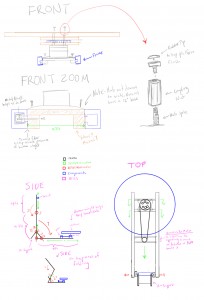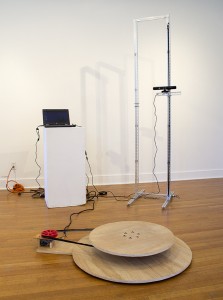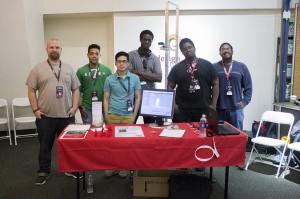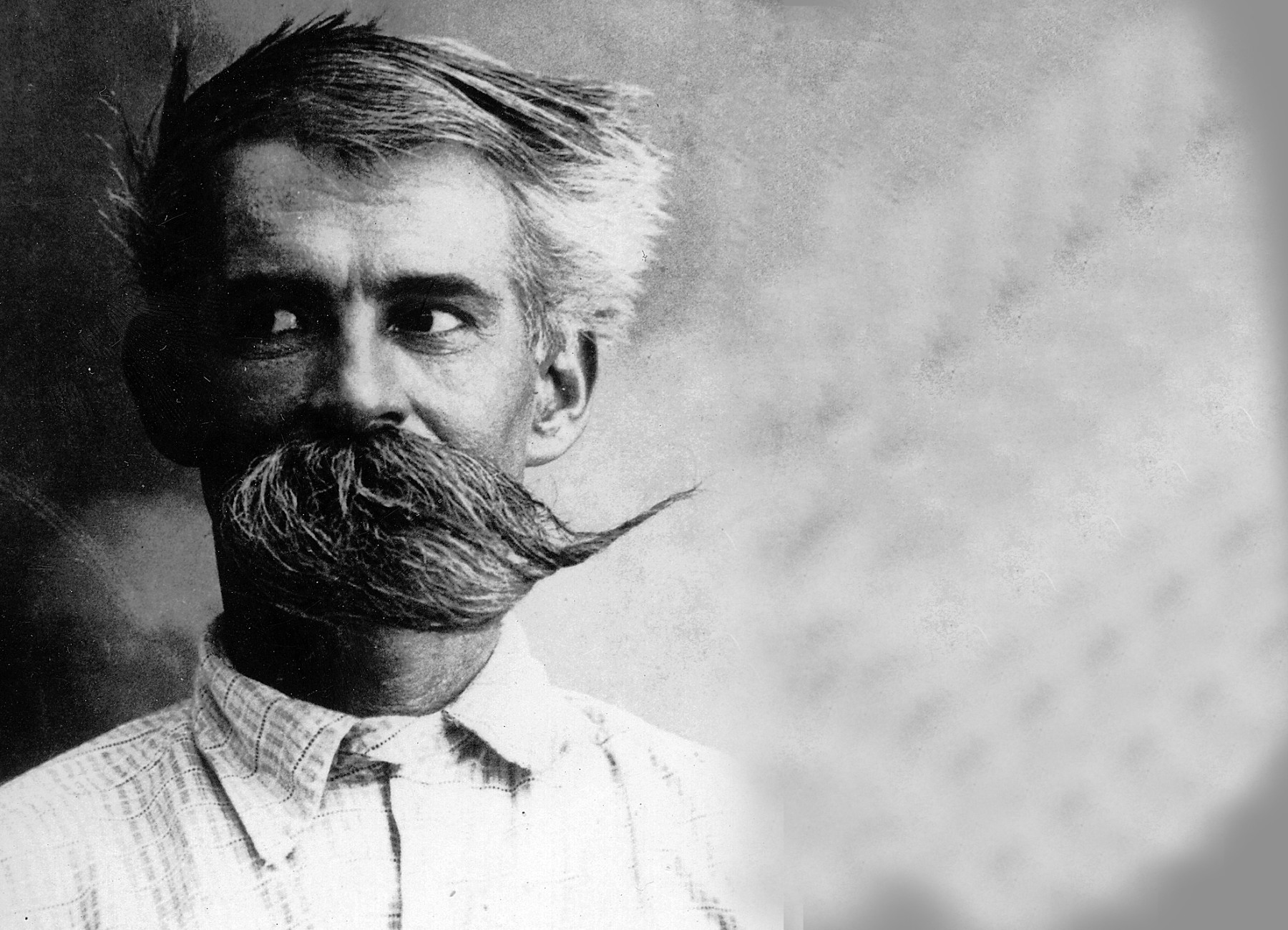Professor Matt Greco
Leroy Leslie, Ashby Nau, Joel Esquite, Wilson Burdier, and James Taylor
Beginning Spring 2014 semester and continuing through the summer 5 students in my Special Projects in Design & Development course at Queens College CUNY hacked (hacked as in customized or re-appropriated not hacked as in attacked or destroyed as has become the common usage) a Microsoft Kinect into a person-sized 3D scanner. The course entailed both hacking the Kinect to use as a 3D scanner (students learned that a Kinect is fundamentally a 3D scanner although used primarily for video games), building a person-sized motorized turntable, and building a rig for the Kinect to mount that was motorized and could move the Kinect up and down on a track.
 I taught the course as if the students had been hired as part of a development team (by Google, or Facebook, or Oracle etc.) that needed to develop a product from the experimental stage all the way through to production. They were responsible for much of the day to day work while I acted more as manager and jumped in with knowledge and/or solutions when warranted. Their responsibilities included designing the device and creating a BOM (bill of materials), sourcing materials from the easiest and cheapest vendors, building so that the device would be cost effective, dealing with complications in ordering goods (dealing with a bureaucracy like a university was a great learning experience), dealing with complications with suppliers (one key component as designed was back-ordered for months), returning to the drawing board when one (or many!) of our best laid plans failed, redesigning/retooling, and presenting to the public.
I taught the course as if the students had been hired as part of a development team (by Google, or Facebook, or Oracle etc.) that needed to develop a product from the experimental stage all the way through to production. They were responsible for much of the day to day work while I acted more as manager and jumped in with knowledge and/or solutions when warranted. Their responsibilities included designing the device and creating a BOM (bill of materials), sourcing materials from the easiest and cheapest vendors, building so that the device would be cost effective, dealing with complications in ordering goods (dealing with a bureaucracy like a university was a great learning experience), dealing with complications with suppliers (one key component as designed was back-ordered for months), returning to the drawing board when one (or many!) of our best laid plans failed, redesigning/retooling, and presenting to the public.
The course made students responsible for designing and building with familiar electrical/robotics components but also for designing and building with traditional construction materials as was needed for the turntable. They had to figure out the best design for the turntable and  had to find source material as reference. They had to figure out what kind of existing products could be hacked for their use (e.g. We need some kind of bearing for the turntable to spin? What kind of bearing is large, can handle the weight of a person, and already has bolts on either end? An automobile wheel hub!) Once built the team members had to become experts at operating the scanning rig which had its share of hits and misses. When the device was complete and they were confident they could use it expertly I convinced them to exhibit the scanner at the 2014 Maker Faire which they did to great aplomb earning themselves a Red Ribbon for Best in Class. They spent the weekend showing the device, talking with visitors at the NY Hall of Science and scanned over 100 people for free and later emailed them their scans. The crowds they had at their booth even drew the attention of the press. The team was interviewed by the Times Newsweekly, the article can be seen here.
had to find source material as reference. They had to figure out what kind of existing products could be hacked for their use (e.g. We need some kind of bearing for the turntable to spin? What kind of bearing is large, can handle the weight of a person, and already has bolts on either end? An automobile wheel hub!) Once built the team members had to become experts at operating the scanning rig which had its share of hits and misses. When the device was complete and they were confident they could use it expertly I convinced them to exhibit the scanner at the 2014 Maker Faire which they did to great aplomb earning themselves a Red Ribbon for Best in Class. They spent the weekend showing the device, talking with visitors at the NY Hall of Science and scanned over 100 people for free and later emailed them their scans. The crowds they had at their booth even drew the attention of the press. The team was interviewed by the Times Newsweekly, the article can be seen here.
 This course was experimental in many ways but mainly it was an experiment in teaching high technology courses within the reference frame of the Art Department (I am an Prof. in the Art Dept at Queens College) with a multi disciplinary set of students (I had 3 Computer Science majors on the team and 2 Art majors) using Student Centered Teaching as the main teaching philosophy. It was a great success and has now inspired a number of projects that the students are excited about pursuing.
This course was experimental in many ways but mainly it was an experiment in teaching high technology courses within the reference frame of the Art Department (I am an Prof. in the Art Dept at Queens College) with a multi disciplinary set of students (I had 3 Computer Science majors on the team and 2 Art majors) using Student Centered Teaching as the main teaching philosophy. It was a great success and has now inspired a number of projects that the students are excited about pursuing.
This course would not have been possible without the support of The Center for Teaching and Learning at Queens College specifically through their URME (Undergraduate Research Mentoring Education) grants.
A special thanks to: Eva Fernandez (Provost & CTL), Markus Erndl (OIT), Tony Gonzalez (Chair, Art Dept), Linda Jackson (contributing photo/video), Luz Silva (OIT), Justin Homer (OIT), and the URME 2013 Review Committee.
Press:
Times Newsweekly Sept 25th, 2014
Video of build and Maker Faire 2014:
Build Gallery:
Maker Faire Gallery:









































